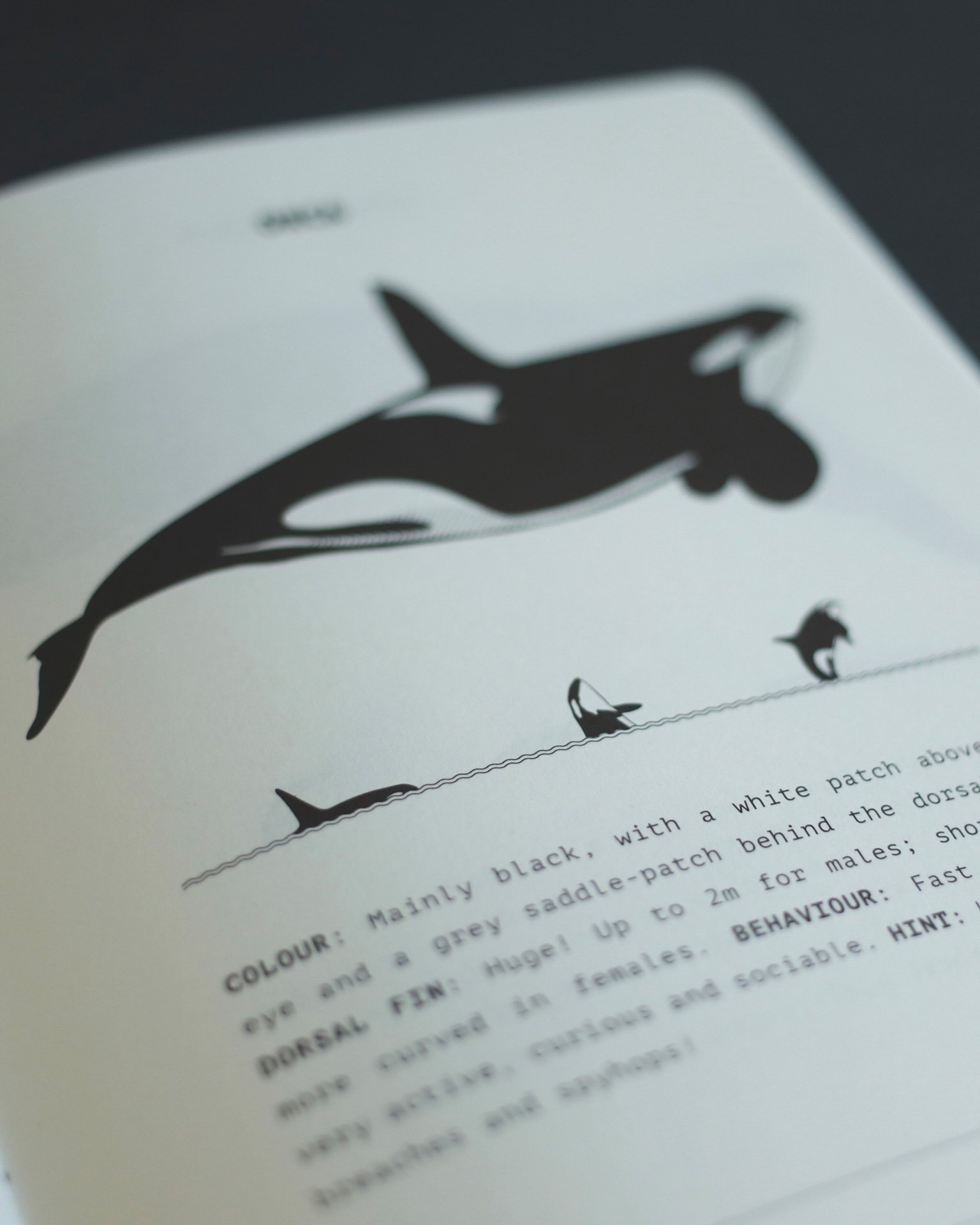Ein Jahr Whale Watching auf einen Blick: unser Walplaner
Wir werden oft gefragt, wo man denn zu dieser oder jener Jahreszeit am besten hinfahren sollte, um diesen oder jenen Walen zu begegnen. Unser Walplaner gibt von Januar bis Dezember einen hilfreichen Überblick über die schönsten Orte, um Wale zu Beobachten. Gute Reise!
JANUAR
Anfang des Jahres versammeln sich Tausende Buckelwale in den Gewässern vor Hawaii, um ihre Jungen zur Welt zu bringen. Die beste Zeit ihnen zu begegnen: Dezember bis Mai. Gute Alternative: In Norwegen und Island kann man jetzt Wale (Orcas! Buckelwale! Finnwale!) und Polarlichter gleichzeitig beobachten. Perfekter Winter-Trip!
FEBRUAR
Jedes Jahr wandern Tausende Grauwale zwischen Mexiko und Alaska hin und her – eine der längsten maritimen Wanderungen der Welt. Zwischen Dezember und März/April pflanzen sie sich in den warmen, flachen Buchten der Baja California fort. Danach machen sie sich auf den langen Weg zu ihren reichen Nahrungsgründen im Norden. Außerdem: In Neuseeland ist jetzt Hochsaison! Vor der wunderschönen Küste von Kaikoura kann man fast das ganze Jahr über Pottwale sehen!
MÄRZ
Auf der Valdes Halbinsel in Argentinien kann man im März eine absolut einzigartige Jagdtechnik bestaunen: Orcas stranden hier vollkommen absichtlich, um junge Robben direkt am Strand zu jagen. So gut wie Nirgendwo sonst auf der Welt jagen Orcas auf diese Weise. Wer von der argentinischen Atlantik-Küste weiter zur chilenischen Pazifik-Küste fährt, kann außerdem Blauwale sehen: Zwischen Dezember und April bringen sie im Golf von Corcovado ihre Jungen zur Welt. Auch eine Reise wert: Im kanadischen Tofino und Ucluelet feiern die Menschen die Ankunft der ersten Grauwale.
APRIL
Höchste Zeit, die Giganten der Meere zu treffen! Blauwale sind die größten Tiere, die je auf diesem Planeten gelebt haben. Es gibt allerdings nicht allzu viele Orte, an denen man ihnen auch gut begegnen kann. Die Azoren gehören dazu! Blauwale passieren die kleinen Atlantik-Inseln auf ihrem Weg nach Norden, zusammen mit einigen anderen Großwalen – beste Zeit: Zwischen April und Mai!
MAI
Frühling in Manitoba und Nunavut, den arktischen Regionen Kanadas: Hier trifft man jetzt Grönlandwale, Belugas und Narwale direkt an der Eisgrenze. Und Eisbären. Und Walrosse. Etwas günstigere Alternative: Grönland! IM Westen der Disko Bucht kann man vor Qeqertarsuaq mit etwas Glück ebenfalls einige arktische Wale sehen, bevor sie dem aufbrechenden Eis folgen und Ende April, Anfang Mai weiter nach Norden ziehen.
JUNI
Im Sommer sind sämtliche Küsten Nordamerikas ein guter Ort für Whale Watching: Quebec, British Columbia, New England und Kalifornien gehören zu den besten Gegenden überhaupt auf der Welt für Walbeobachtungen. An der Ostküste sind Finnwale, Zwergwale und Blauwale zu sehen, im Westen vor allem Orcas und Grauwale. Buckelwale gibt es überall. Worauf man besonders in Nordamerika achten muss: Es sollten niemals mehr Boote als Wale unterwegs sein.
JULI
Sommer in Island und Norwegen! Beides sind hervorragende Orte für Walbeobachtung. Wer vulkanische Einöden voller Wasserfälle und Gletscher mag, ist in Island genau richtig. Wer lieber beeindruckende Fjorde und kilometerhohe steile Felswände sehen will, muss nach Norwegen. Dort sieht man jetzt vor allem Pottwale, in Island vor allem Buckel-, Finn- und Zwergwale, im Westen auch Orcas. Alternative: Kalifornien ist das ganze Jahr über schön, jetzt im Sommer kann man aber sehr viele verschiedene Wale sehen, auch Blauwale!
AUGUST
Die perfekte Zeit für Grönland! Hier kann man mit einem Boot zwischen gigantischen Eisbergen umher fahren – begleitet von Buckel- und Finnwalen. Nicht ganz so kalt aber ebenfalls voller Gletscher: Alaska! Auf einer Bootstour durch die magische Inside Passage begegnet man Orcas und Buckelwalen. Alternative: In Argentinien springen die massigen Glattwale jetzt ganz nah an der Küste herum.
SEPTEMBER
September ist die ideale Zeit, um Orcas und Bären auf Vancouver Island zu beobachten! Telegraph Cove ganz im Norden wird oft als „Welthauptstadt der Orcas“ bezeichnet. Zu Recht! Zeitgleich in Australien: Jedes Jahr wandern Tausende Buckelwale von der Antarktis bis an die nördlichen Küsten West- und Ost-Australiens, um sich fortzupflanzen. Vielleicht der beste Ort, um Buckelwal-Babys ausdauernd herumspringen zu sehen: Hervey Bay in Queensland.
Oktober
Mehr als 400.000 Menschen reisen jedes Jahr nach Südafrika, um die südlichen Glattwale zu beobachten. Am häufigsten begegnet man ihnen zwischen Juli und Oktober. Da sie oft sehr nah an die Küste kommen, kann man sie hier auch sehr gut von Land aus sehen. Fun fact: In Hermanus gibt es einen „whale crier“, dessen Job es ist, immer in ein Horn zu blasen, sobald ein Glattwal gesichtet wurde.
NOVEMBER
Im Land der Kängurus und Koalas kann man jetzt hervorragend Wale beobachten – vor allem Buckelwale, Glattwale und Blauwale. Die Buckelwale sind im November bereits auf dem Weg zurück in die Antarktis, an der südlichen Ostküste kann man ihnen noch begegnen. Ganz im Süden trifft man jetzt vor allem Glatt- und Blauwale. Gute Alternative: In Neuseeland beginnt die Hauptzeit für Pottwal-Watching, in Kalifornien trifft man jetzt vor allem Grau- und Blauwale.
DEZEMBER
Wer es im Winter eher warm und gemütlich mag, sollte einfach den Grauwalen nach Mexiko folgen: Zwischen Dezember und April bringen sie in den warmen, flachen Buchten der Baja California ihren Jungen zur Welt. Wer es jetzt lieber kalt und winterlich mag, muss sich zwischen Norwegen und Island entscheiden: Hier kann man Winter-Whale-Watching mit Polarlicht-Safaris verbinden, eine phantastische Kombination! Wahrscheinlichste Wale hier wie dort: Orcas und Buckelwale.
BESCHÜTZEN WAS MAN LIEBT
Über 15 Millionen Menschen gehen jedes Jahr auf Walbeobachtung – und diese Zahl steigt Jahr für Jahr. Einmal die Riesen der Meere zu sehen, scheint für viele ein großer Traum zu sein. Wenn Whale Watching richtig betrieben wird, kann es ein unvergesslicher Moment sein – und auch ein Augen öffnender. Denn manchmal müssen Menschen etwas mit eigenen Augen sehen, um es wirklich zu begreifen. Um ein Verständnis zu entwickeln. Mitgefühl. Sorge. Vielleicht sogar Liebe. Menschen beschützen, was sie lieben.
VERANTWORTLICH HANDELN
Am besten ist es immer, Wale von Land aus zu beobachten. Und das ist auf vielen Orten dieser Welt auch sehr gut möglich. Wer trotzdem ein Boot besteigen möchte, sollte darauf achten einen vernünftigen Anbieter auszuwählen. Einen, bei dem die Wale an erster Stelle stehen – nicht das Geld und auch nicht das bestmögliche Instagram-Foto. Bei einer guten Waltour kann und soll man etwas lernen. Ein bisschen nachdenken. Sich begeistern lassen. Und am besten auch ein paar Tipps bekommen, was man im Alltag tun kann, um Wale und ihren Lebensraum besser zu schützen.
HAPPY WHALE WATCHING
Es gibt über 80 verschiedene Wal- und Delfin-Arten auf der Welt. Und man kann ihnen in über 100 Ländern begegnen. Mit whaletrips.org versuchen wir die besten Informationen zum Thema Walbeobachtung zu bündeln: Wir konzentrieren uns auf die interessantesten Wale, die besten Orte und die beste Zeit, ihnen zu begegnen. Wir hoffen, diese Seite ist eine gute erste Inspiration für eine unvergessliche Reise. Happy whale watching and have a whale of a time!
Für noch mehr Vorfreude
Walfahrt
Über den Wal, die Welt und das Staunen: Das Beste aus zehn Jahren Walfahrt gibt es jetzt auch als Buch. Bei uns im Shop gern auch mit einer Widmung nach Wunsch!
Das wichtigste für unterwegs
Travel Notes
Die wichtigsten Wal-Infos für unterwegs, mit ganz viel Platz für eigene Notizen: unsere TRAVEL NOTES sind der ideale Begleiter für deine nächste Walfahrt.
Für einfach jede Lebenslage
Notes
Der optimale Ort für tolle Erlebnisse und gute Gedanken: Unsere NOTES sind ein elegantes Notizbuch für alle Lebenslagen, egal ob auf Reisen, im Café oder Zuhause.









